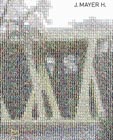|
|
| home > extended play |
| Re-encountering Data Felicity D. Scott |
||||
| Among its many provocations, the work of J. Mayer H. Architects suggests that we might interrogate the legacy and contemporary relevance of the architectural production of the nineteen-seventies differently, self-consciously, to other ends. In a recent conversation with Bostjan Vuga, Jürgen Mayer H. noted of that period: "there was serious excitement about technology and culture. There was hope about the future. Yet it was not uncritical. We questioned hierarchies of power, information and control." If architects in the seventies had attempted to engage potentials inherent within technology -the utopian aspects of which, as Mayer H. noted, were often inextricable from their dystopian counterparts- it is important to recall that the technologies capturing architects' imaginations at the time were quite distinct from those that had informed high Modernism. Under the impact of cybernetics, computerization, and the "third machine age," modes of production and their material substrates were no longer, strictly speaking, industrial: if not fully eclipsed by postindustrial counterparts, they had nonetheless become a complex mélange. As evidenced in the work of experimental architects -from Archigram and Cedric Price to Hans Hollein, Haus Rucker Co., Arata Isozaki, Ant Farm, and others- this historical transformation in the technological environment posed not only material and formal challenges to architects but also, and importantly, conceptual, programmatic, and organizational ones. And by the early seventies, if not before, many had begun to recognize the discipline's role in giving material and spatial form to, even institutionalizing the apparatuses of, emergent techniques of power and control. (1) Mayer H. perhaps pointed to a contemporary version of this implicit shift away from formal and semantic concerns and towards questioning "hierarchies of power, information and control" when he added to the previously cited remark: "I think the same happens today. Today we look into fluid conditions, flexibilities and horizontal organizational structures." (2) 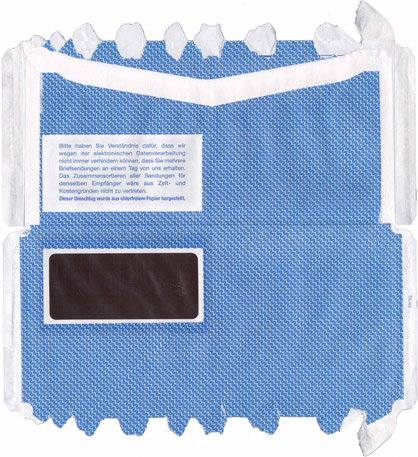 Here and following: security letters with data protection patterns. Vuga returned later in the interview to the question of J. Mayer H.'s invocation of the seventies, referring to the office's "retro reference." To Vuga, those references risked falling into the trap of a stylistic, even fashionable, retrieval of seventies aesthetics. "Today," he remarked, "round corners, floor-wall-ceiling, continuous surfaces, soft edges, etc., are already the safe, approved and likely to be accepted derivatives of those years," to which he added that "of course, one can argue that there are still some gaps in the architectural language of the seventies to be discovered..." Mayer H. had earlier mentioned chamfered corners and other forms of surface continuity, and we can certainly identify such formal operations in many of his recent built works -for example, in Corridor; Mensa Moltke, Karlsruhe; and Villa Familie Max Maier- as well as in his revisiting of Supergraphics -for instance, in In Heat and again in Housewarming My Home. Yet, I want to suggest that this is perhaps not the register in which the office's work most evidently delaminates the dreams and nightmares of the seventies, particularly the period's anxieties regarding architecture's fate within ever-expanding information ecologies. Vuga was, of course, entirely warranted in raising the problematic nature of a "retro-reference" methodology. Such an approach would indeed suffer from a real inefficacy in any attempt to engage historical contingencies or specificities, which would form the very matrix of a possible social and political response. 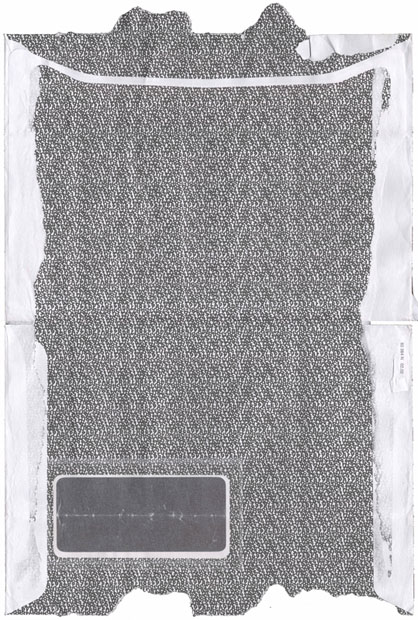 I want to ask, then, if we can read such aesthetic traces in a more symptomatic manner: not simply as stylistic or formal references, but rather as allegorical appropriations which set out to raise the very question of how to render legible both historical and contemporary anxieties about the impact upon the architectural object of new processes of data control (i.e., the loss of transparency) and their relationship with emerging techniques of power. Mayer H. initially responded to the invocation of the term "retro reference" by suggesting that "seventies architectural language is not really revived yet. There is still something left behind, not tested. There is still a potential that I want to explore, take on and rethink for the future." If he was pointing in this context to the heaviness, even clumsiness or ugliness, of certain work from the seventies, I want to reiterate that it was perhaps not style -or even architectural language in the traditional sense- that was at stake. It was, rather, something like the manner in which bodies -both architectural and human- continued to impinge upon the apparent seamlessness of that information milieu, and the way in which that materiality could traffic in questions beyond those proper to form and aesthetics. "The materiality of architecture about thirty years ago still carries a potential to work on form and program," Mayer H. added, offering a clue. (3) It is important to note that in recalling such concerns we find ourselves at quite a distance from the Neo-Modernism which so captivated American architectural discourse during the seventies -as exemplified in the debate of the Grays versus the Whites, or Neo-Rationalism versus Neo-Realism- and equally distant from those more strictly European formulations of urban morphology and typology that were simultaneously offered as another starting point for a Postmodern architecture. Experimental engagement with information technology sought not to return to problems of form as the domain of architecture's contribution to the urban and social milieu, or to reassuring paradigms of representation and semantic legibility, so much as to mapping the contours of and forces driving the dissolution of both form and semantic legibility. At stake was the issue of how the discipline of architecture might operate within an electronic environment, how it could define space or territories within the streaming of data and through recursive structures of feedback, how it might negotiate to critical ends the forces that seemed to be driving that transformation. 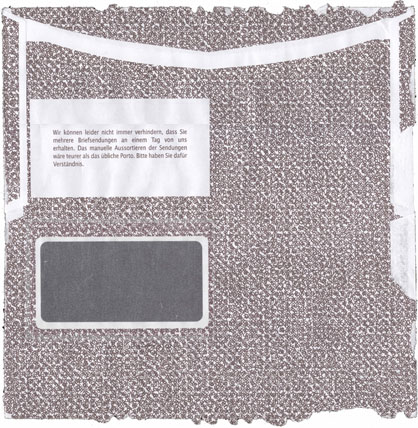 If the impact of those forces upon architecture was, in some sense, just becoming legible as critical concerns in the early seventies, then by 1996, when J. Mayer H. Architects was founded, the discipline was experiencing a new fascination with the digital. If many architects of Mayer H.'s generation sought to naturalize the discipline's relation to information technology, to render it outside the scope of critical architectural interrogation, this practice would, importantly, refuse that trend -and in so doing, it has offered some of the most compelling reconsiderations of architecture's imbrications within a contemporary technological milieu. To understand J. Mayer H. Architects's conception of that environment, which pressures it suggests might be at work on the bodies (including architectural bodies) that inhabit it, and how the work speaks to the fate or condition of materiality under the impact of informatization, we might turn to the office's ongoing research with one of its key components: data. From early Data Protection Pattern (DPP) projects such as Gästebuch (Visitors' book) and Lie, we find Mayer H. musing on technologies and material substrates (in this case, print) that are designed to control the flow of data. These projects retrieved an early-twentieth-century technology, DPP, that was developed to veil information in print media through producing an information overload. An excess of information (print characters) serves to camouflage or render illegible a particular message, allowing, as Mayer H. explains, private information to be transmitted through the public realm (whether the mail system or simply the hands of others) in order to be received elsewhere. In Full.House, we find an installation in which the DPP has spread from the pages of visitors' books and the surfaces of bed linen, as mentioned above, to wallpaper, pictures and updated versions of the office's earlier designs for tile-covered or pixelated soft furniture. Describing the project, J. Mayer H. points to the archaeological nature of the work, suggesting: "these patterns can be interpreted as a contemporary ornamental byproduct of the process of data control. They are prototypical for the information transactions of the 20th century and invoke the current debate around personal privacy and the public domain." (4) These artifacts, however, now figure as components in something like a Gesamtkunstwerk (total work of art), suggesting an environment in which every artifact comes saturated with the specter of information transactions, literally surfaced with "ornamental byproduct[s] of the process of data control." Here is a new type of "writing on the walls", a new type of communication or media environment. 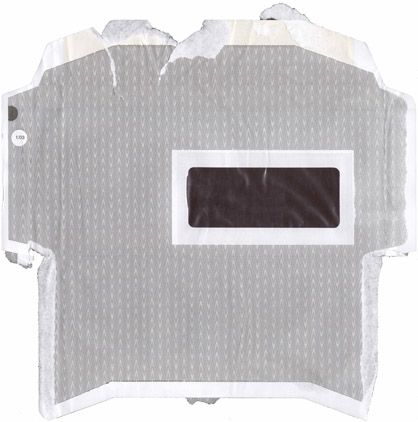 To reiterate, and as Mayer H. reminds us, DPP is an early-twentieth-century technology. It is the product (or by-product) of an era of analog media, in which the imprint or registration of a numeral or alphabetical character -whether in print, on printing plates, or on carbon paper- took on a recognizable physical form (just as with the trace of sound on a record or of an image in a print or photograph, or even, as was assumed, an architectural function in a building), even if those forms are here rendered so dense and impacted as to occlude that very legibility. The obsolescence of this analog form of data protection in a digital age suggests, to stress the point, that its deployment here is allegorical. Its digital counterpart (whether thought of as encryption or noise) would have to operate in a condition where information had not only been reduced to streams of zeroes and ones, but in which such data could modulate from text to sound to image without recourse to a particular material form. Mayer H.'s use of DPP perhaps also serves to remind us that the imprints or impressions of industrial technology find a certain updating in electronic and digital media. That is to say, the human body and psyche experience something like electronic imprinting in the very altered modes of reception sponsored by these new forms of transmission, in the subject's learned habituation to the vicissitudes and transmutability of post-industrial technologies. (We might additionally recall here the presence of Pitter.Patterns on the Stadthaus Scharnhauser Park, which implies not only the doubling of the material façade but which performs multiple possible transmutations through feedback systems and electronic control.)  But it is not, of course, DPP alone that establishes the performative character of these projects, for the DPP on their surfaces is printed using temperature-sensitive paint or ink, a sensing technology derived from NASA in order to render structural failures visible. Here, thermosensitivity is deployed to render the human body itself a programmatic element: at once a carrier of data in the form of the traces it leaves behind, and the vehicle for a passage towards forms of transparency. Touching, holding, sitting, lying, or pressing against these surfaces, the body interferes with the interruption of communication to facilitate data exchange, often of the most private nature. By its very presence the body serves as one more piece of communication equipment, but in so doing it also speaks to certain vulnerabilities in its activities that are a by-product of the information environment. As Mayer H. acknowledged in the interview with Vuga, "The consciousness of leaving traces in our risk control society turns every surface into something that suspiciously captures personal information. Architecture is not innocent anymore, maybe never was." (5) Architecture's lack of innocence regarding the body's modes of inscription within the built environment was perhaps best recalled by Path.Logic, a monitoring system which tracked visitors' pathways through the exhibition CTRL.Space at the ZKM (Center for Art and Media) Karlsruhe, presenting them with a souvenir printout of their individual trajectory upon departure. If reminding us of the early-twentieth-century time-space studies of Frank and Lilian Gilbreth -which tracked movements undertaken during simple labor tasks in order to evaluate their functional efficiency, and hence their profitability within industrial modes of capitalism- we also find here a certain epistemological distance. Path.Logic diagrams were not produced from the visual traces emitted by a light attached to a laboring body, but rather offered a data-image or data-shadow derived from an electronic monitoring system in which the body's actions were tracked not for their efficiency but for their patterns and habits, even during leisure. In this, Path.Logic recalls contemporary practices of extracting surplus information from our spending patterns (think of credit-card or Internet purchases), which is recuperated as saleable marketing data for contemporary forms of capitalist profitability. 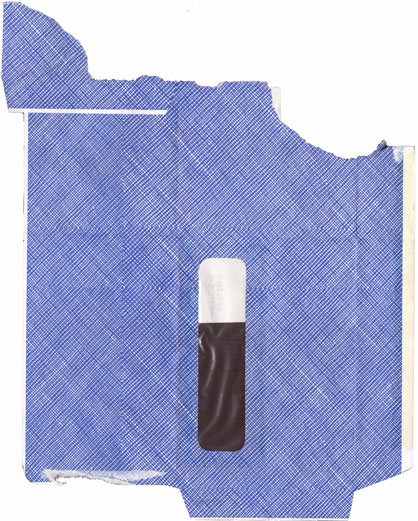 Perhaps the most ironic troping, or most discomforting reading of the contemporary body's precarious state of suspension within this information milieu, is offered by Body.Guards. Body.Guards is a proposal for an invisible, adaptive "smart dust," a swarming nano-device that operates as a "new kind of outfit" in order to provide both a form of detection and a defense mechanism within an increasingly hostile, even militarized, environment. "Nearly invisible airborne particles," we are told, "build up a dynamic intelligent cocoon for testing, warning, spying, scouting, communicating, guarding and protection," scouring the environment for "physical, biological, chemical or radioactive hazards." Paranoid in the literal sense of the term, the project speaks not only to our suspension within interconnected information systems too complex to decode, but also to our condition as relay points within ubiquitous computing systems, mapping our capacity (or lack thereof) to launch strategies of defense (whether psychological or physiological) within it. This prosthetic device, which also updates long-standing architectural fantasies of reducing the built environment to a wearable technology, purports to offer something like an illusion of immunity or even agency within that milieu. However, it is self-consciously cast as external to the body -literally, in the architect's words, "an artificial, external immune system." (6) In this potential occlusion of our receptiveness to the environment as such, we find the appearance of a new form of blasé attitude, an updating of that which was theorized by Georg Simmel in order to account for the psychological profile of the metropolitan dweller of the early twentieth century. A new set of prosthetics are needed for this state of suspension, those which no longer simply supplement our eyes, ears, and hands, but also our very psychological makeup.   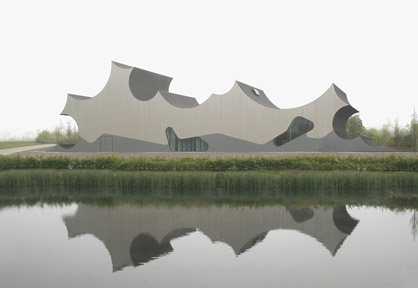 J. MAYER H. Architects, Danfoss Universe, Masterplan - Curiosity Center / Food Factory, Nordborg, Denmark, 2007. The idea that the flexible and systematic logics of postindustrial technologies might give rise to new, even liberating, modes of participation within the built environment has long fueled experimental architectural fantasies. In the work of J. Mayer H., we can begin to trace a distinct set of responses to the condition of the subject suspended within a now evidently pervasive information milieu. If, on the one hand, the use of thermosensitive coatings serves to "confuse" or "merge" the viewer with the art and environment -their bodily traces literally inscribed, at least for a moment, on the surface of the objects and spaces through touch, "creating a temperature shadow"- then, on the other hand, the ghostly presence of the human and the evident disappearance of this "temperature shadow" in time seem to recall Foucault's remarks about the disappearance of "man." The very notion of humanity, he suggested in the final pages of The Order of Things, might prove to be an antiquated epistemological construct, the product of certain "arrangements of knowledge," which could "be erased, like a face drawn in the sand at the edge of the sea." (7) If the humanist subject can be recognized as a discursively constructed mirage, this does not imply that the human as such disappears. The work of J. Mayer H. calls upon us to ask how our understanding of subjectivity, and of the modes of inscription of a subject within both an architectural environment and a socio-political framework, might be radically rethought; how, with the historical emergence and now contemporary ubiquity of control technologies, the very figure of the human seems not simply to dissolve without a trace but to have become disseminated within those "fluid conditions, flexibilities, and horizontal organizational structures." What appears to be at stake, then, in this return of a body suspended in time or duration, suspended within an information environment, is the question of how it might appear not only as a data shadow but also be situated as something like a self-conscious and material interruption. 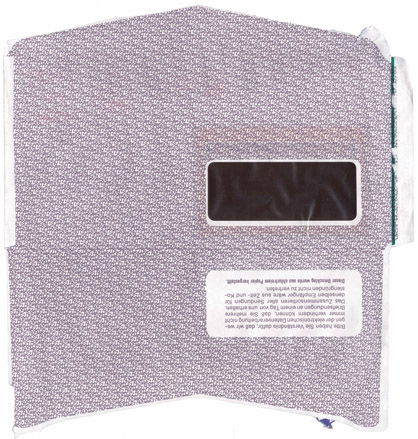 What I am suggesting here is that the problem of how to engage with new and emergent territories of data, or how to enlist them for new and alternative ends, might be taken as a challenge to the discipline of architecture, a challenge to continuously formulate new ethical responses to the environment, new modes of being and belonging, new forms of life. In the wake of revelations emerging from the social and technological experimentation of the seventies, and faced with ever more precise and expansive forms of regulation and control, we can read the work of J. Mayer H. as suggesting that architecture can still articulate a response to these forms, operating not only in the formal register but also to incite a set of ethical reflections. The work prompts us to ask how architecture can take into account those "hierarchies of power, information and control" even if they remain radically unstable, only partially knowable; how, as a discipline, it might continuously and without apology speak to broader pressures impacting its conceptualization and production. One testing ground for articulating responses to this uncertain and non-transparent condition is what J. Mayer H. has designated an "activator," an architectural object which sponsors a mode of interaction with the environment in which both the designer and the user emerge as co-authors of an indeterminate outcome -that is, in which they are situated in relation to a material interface that is never entirely what it seems, but in respect to which we must each take responsibility for our actions. Architecture here has become precisely that interface or activator. Felicity D. Scott |
[12 febbraio 2010] |
|||
| NOTES: 1. See Felicity D. Scott, Architecture or Techno-Utopia: Politics After Modernism (Cambridge, Mass., 2007); and Living Archive 7: Ant Farm (Barcelona, 2008). 2. Jürgen Mayer H. "In Anticipation," in Activators, J. Mayer H./Germany, Design Document Series, 19 (Seoul, 2006) p. 13. 3. Mayer H. "In Anticipation," p. 19. 4. http://www.jmayerh.de, accessed May 14, 2008. 5. Mayer H. "In Anticipation," p. 23. 6. Activators, J. Mayer H./Germany, p. 213. 7. Michel Foucault, The Order of Things (New York, 1970) p. 387. |
||||
| This essay has been originally published in the book J. Mayer H., edited by Henry Urbach (with essays by Andreas Ruby, Ilka Ruby, Andres Lepik, John Ricco, Rolf Fehlbaum, Cristina Ines Steingraber, Jurgen Mayer H.), published by Hatje Cantz in 2009. | ||||
| > J. MAYER H. ARCHITECTS | ||||
| ARCH'IT
books consiglia: Henry Urbach (editor) J. Mayer H. Hatje Cantz, 2009 pp. 240, acquista il libro online! |
||||||
